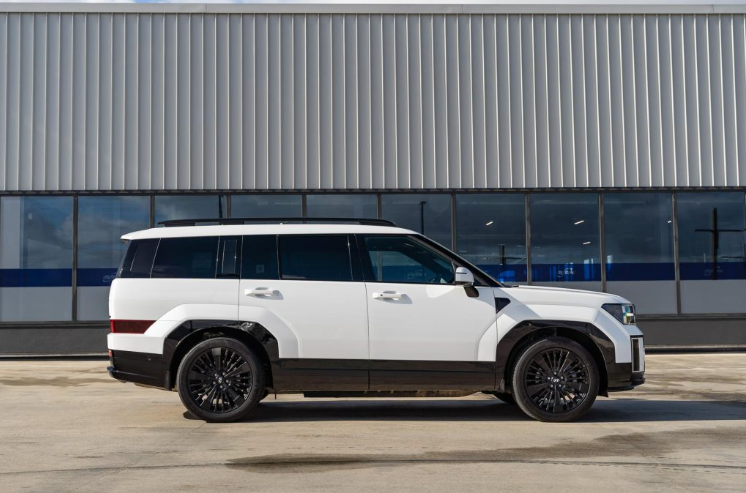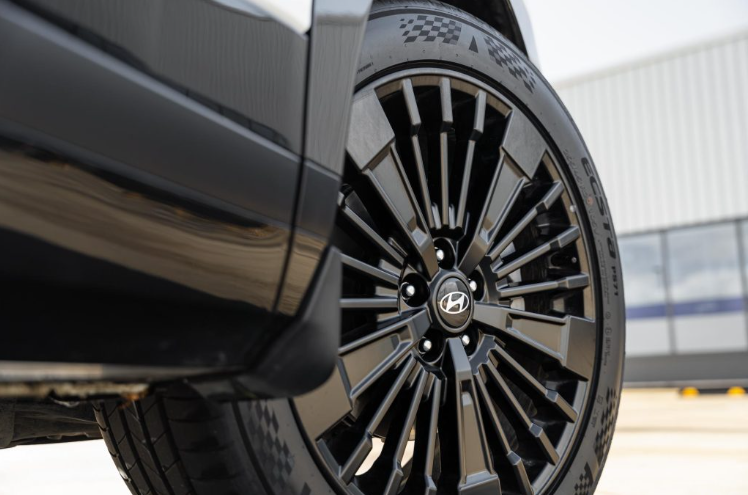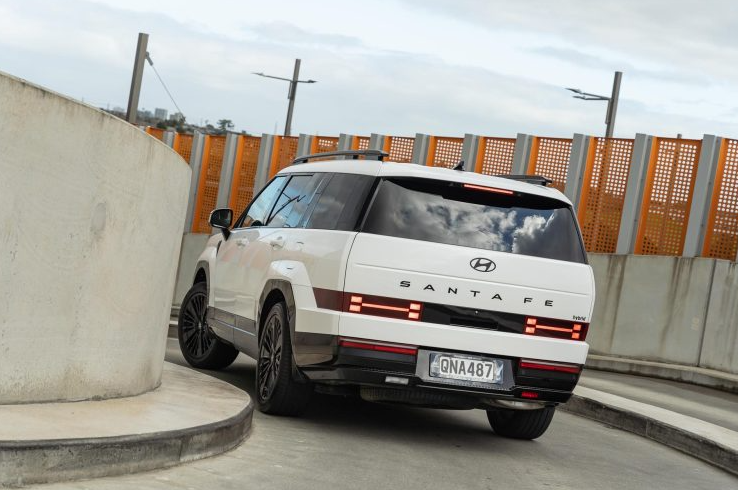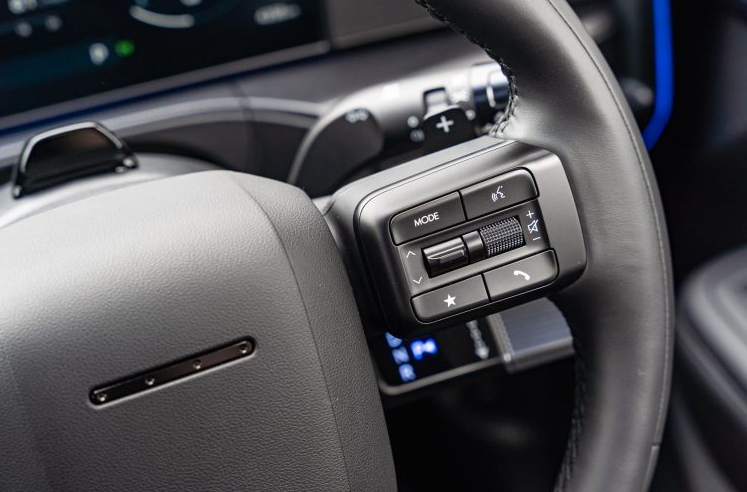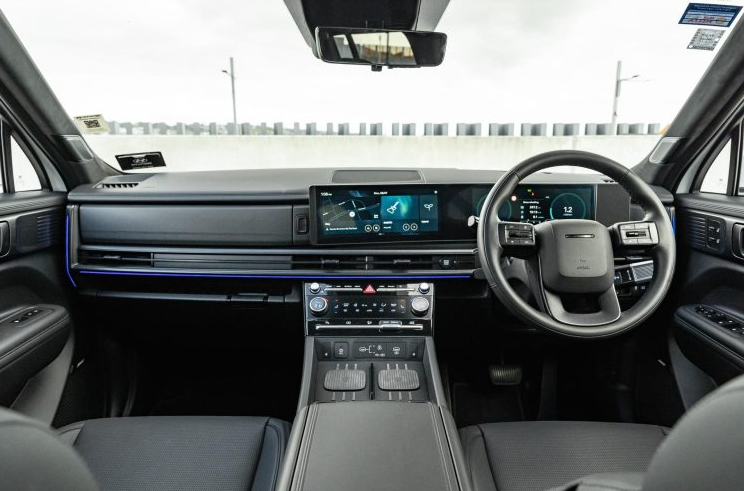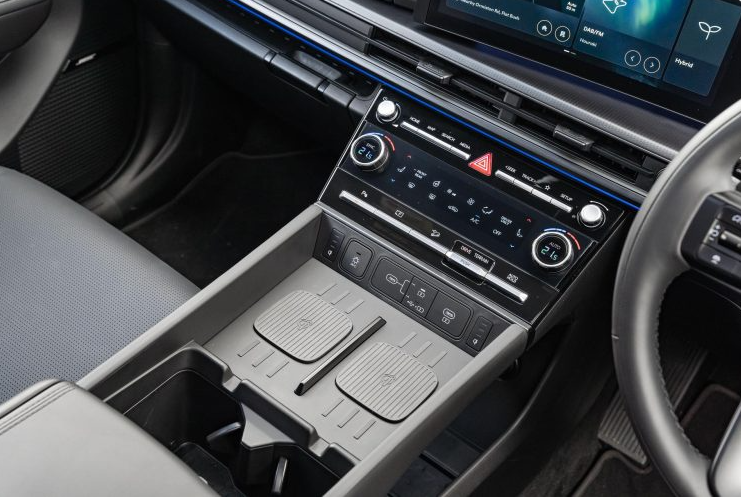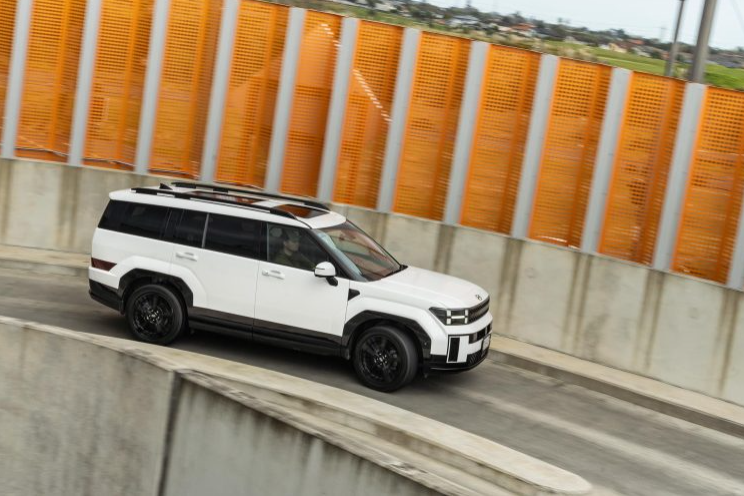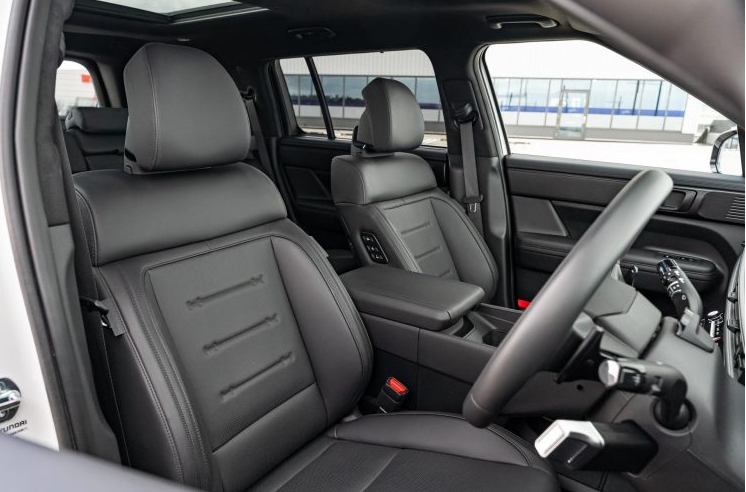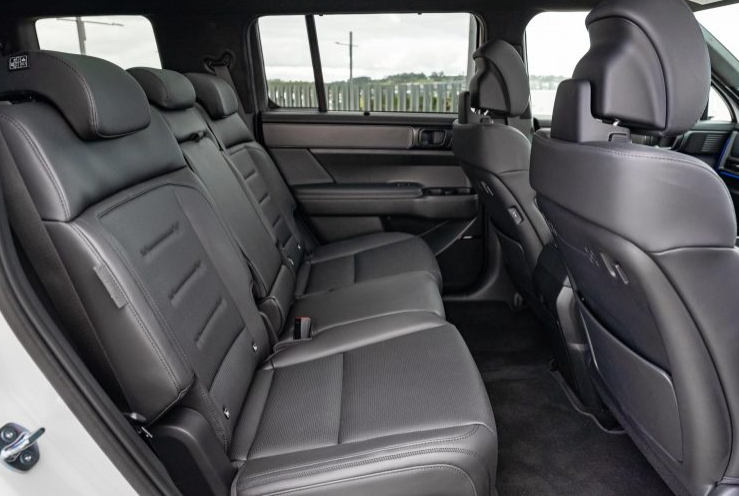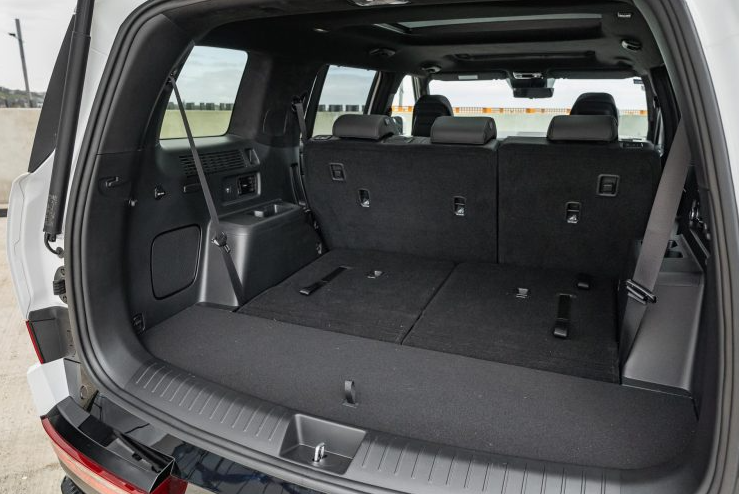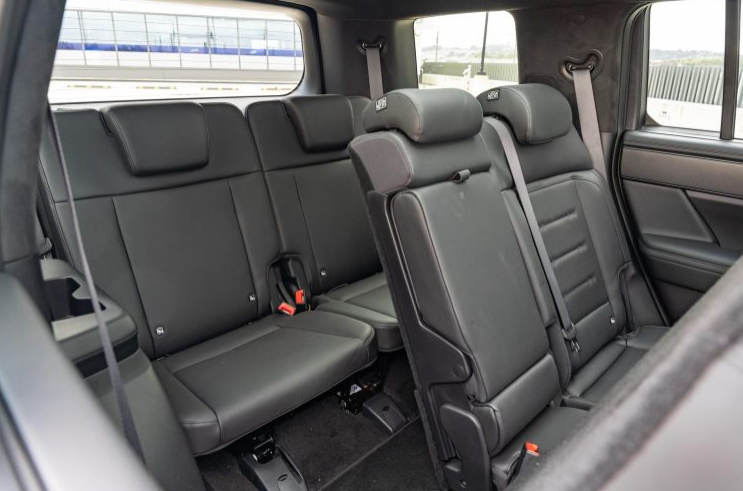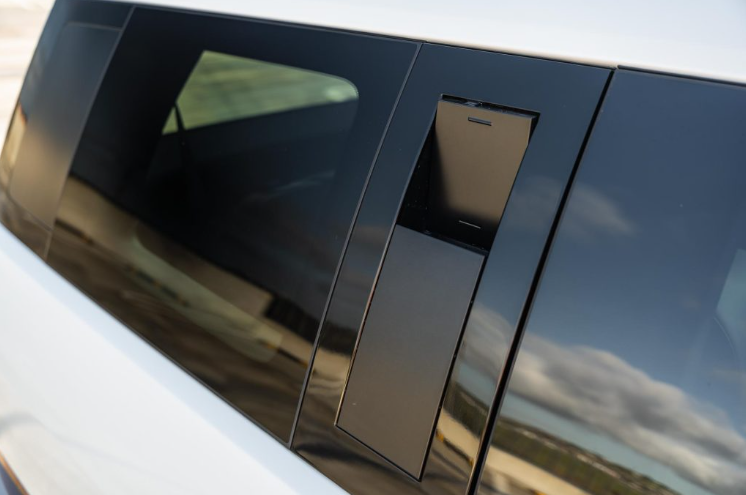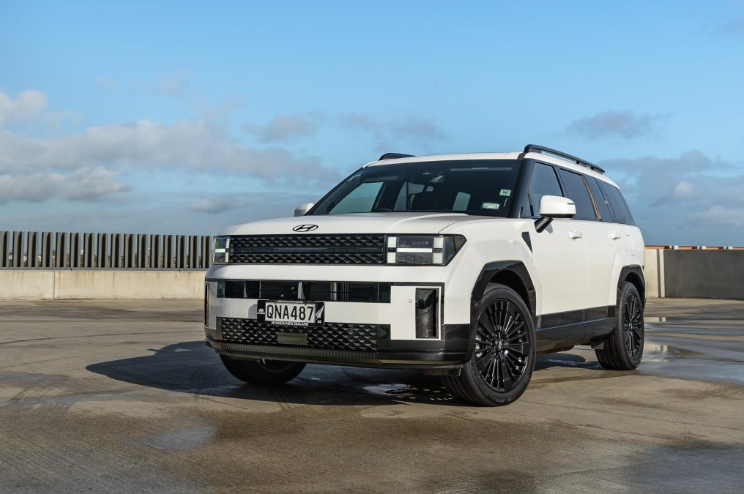2024 Hyundai Santa Fe Hybrid Calligraphy AWD review
Hyundai launches a new Santa Fe, a popular model here over the years.

Hyundai launches a new Santa Fe, a popular model here over the years. This one adds more tech and features, and adopts that bold new look.
While Hyundai has been happy to evolve the Santa Fe’s design slowly over the past decade, the new one adopts a completely new ethos. This is bold and boxy.
And all new, no carryover bits where the body or chassis is concerned. While the new seven-seater is a smidge longer (45mm), it’s not over the top big as the initial images might have suggested.
So its proportions have changed but it’s no wider and just a little taller. Dimensionally, it is comfortably smaller than a Ford Everest, and is only taller than the Highlander on account of its roof rails.
It’s striking, and gets people taking a second look. Sure, it might remind you of a certain Land Rover but that’s not a bad thing, is it?
Prices on the rise
Hyundai pricing has trended higher in recent years, and the Santa Fe is no different. The Santa Fe Active kicks off the three-variant line-up at $84,990, the $96,990 Limited adds more kit while the top Calligraphy is $104,990.
However, these prices seem irrelevant with Hyundai immediately issuing buyers a $10k discount via an introductory deal (valid until further notice). It would be better if Hyundai NZ just came up with a more transparent pricing structure but whatever.
With the ‘discount’ added, the price rise isn’t so bad, the previous entry point being $69,990. But then that was often on sale for $63k, so it has effectively risen by $10k.
There are added features, HNZ says. The new entry point now has bigger wheels, powered and heated seats, wireless charging, a better media system, more safety tech, privacy glass and a powered tailgate.
For reference, similar sized seven seaters include the segment leading Toyota Highlander ($68k-$81k), Kia Sorento ($63k-$81k), Nissan Pathfinder ($83k-$88k) Skoda Kodiaq ($54k-$80k) and Tiguan Allspace ($70k-$80k) while the Mazda CX-90 Takami is $93k
You might cross shop things like Everest ($75k-$90k) and Tank 500 ($75k-$83k) but these 4×4 types aren’t as composed as unibody crossovers like Santa Fe.
Consider these if you need more off road/towing capacity.
Hybrid in, diesel out
Santa Fe is now only offered with a petrol hybrid powertrain. That’s a step change but Hyundai NZ says there’s been a move away from diesel, especially in Europe and so there is no oiler variant available.
There might be a 2.5 petrol turbo (non hybrid) offered at some point however. There is a plug-in hybrid version of this new fifth-generation (ironically dubbed MX5) but that’s for Europe only at this stage.
HNZ introduced hybrid tech (both parallel and PHEV versions) in the previous generation but it only accounted for 20 per cent of sales since it came along in 2021.
The company admits some customers will require ‘education’ around the hybrid switch. We say: don’t be a technophobe as there’s nothing to fear. This new hybrid outputs a combined 172kW/367Nm from its 1.6T petrol and electric motor.
The small increase over the previous hybrid is due to uprated electrical bits. Those include a 44kW/264Nm motor housed in the transmission, working via the six-stage auto.
With a 1.49kWh lithium-ion battery, it does good work by itself. You can adjust the brake regen via the paddles if you like, set it to auto, or have it off.
It’s said to return 6.2L/100km overall (WLTP). That’s about the same as the previous diesel’s 6.1L/100km (but with fewer of the harmful NOx emissions).
The hybrid can tow up to 1650kg, which might be a sticking point for some as the diesel was good for 2500kg.
Refined and economical
It’s quiet this Santa Fe thanks to the usual new model improvements of extra helpings of good steel, better sealing, smoother aeros and items like hydraulic suspension bushings.
The hybrid system is improved too in terms of its transition from EV mode to petrol/electric operation. Given it has a six-speed auto, it’s not as creamy as the Highlander with its e-CVT set-up but it’s generally refined and quiet.
For typical around town driving, we prefer this to the old diesel as the response from stopped is much quicker, and it’s without all the clatter and clamour.
Once up to speed, go light on the gas and the electric motor alone can maintain your momentum, for more than just a few hundred metres too.
That helps consumption; we managed 7.9L/100km over 450km, which was the same as the long term average over 4400km on this rig.
Coincidentally, the last diesel Santa Fe we drove in mid-2023 also had a long term average of 7.9.
Composed too
All models roll on 20s, the ride not suffering as a result as frequency-sensitive dampers make the grade. These help the Santa Fe smooth the edges while maintaining its dignity in the bends.
It’s hard to unsettle, progress being composed and calm. The steering is well assisted, and quick enough at 2.5 turns between the stops, the turning circle manageable too.
This handles remarkably well for a seven-seater, resisting understeer nicely and feels quite neutral in its cornering attitude.
The steering is a good filter of the rough stuff but relays a consistent message, allowing you to keep it tidy and settled.
The hybrid drivetrain can be ‘on and off’ in the Eco mode, though Sport mode delivers a better throttle response, the engine remaining on constantly.
Rounding out a satisfying drive is a consistent brake pedal operation and feel.
Swish inside
Hyundai has cleaned up the centre console, as the last model was awash with buttons and selectors. This is more space efficient, and the prime position is given to that most important of possessions, the mobile device.
There’s space for two actually, the charge pads cooled to allow more effective charging. And USB ports are in abundance, with seven in total.
Practical storage is in good supply. There’s a useful bin underneath the console, cup holders are in the right place, and there are yet more holders for larger vessels in the doors.
A dual-hinged centre console lid means both front and rear passengers get easy access to the lollies inside. The ambient light helps brighten an otherwise all-black cabin, which gives a well made vibe, hard plastics kept to a minimum.
The dash is home to a Panoramic Curved Display, with a pair of 12-inch screens. Nice to have buttons for a few functions however, like the parking camera (both with a surround view and clear backing image) and the ventilation gets its own set of controls.
Some of the touch points are still a little small, but better than having to delve into the main screen to change things up.
The operation of the touchscreen is eased with a few shortcut menus and voice control, or there is wireless CarPlay and AA if you prefer.
Lots of space and gear
The Calligraphy model we drove wears blacked-out badging, wheels and body cladding. It offers more of everything, like nappa leather trim, and ventilated seats with a better range of adjustment including a La-Z-Boy-like full recline mode.
There’s a head-up display, while a unique feature is the sanitising box on the dash; put your gloves and mask inside and UV light is used to sterilise them.
There is also the option of a white interior, and a six-seat layout (two separate chairs in the middle row).
The boxy look is said to help maximise interior space (as does a stretch in wheelbase), with everyone getting enough room to keep family journeys civilised.
There’s the lounging room expected in the back, a flat floor helping there. Abundant cup holders, seat heaters, window shades and USB chargers should keep ’em happy in behind too.
The second row allows good access to the rear, each side equipped with a one-touch fold and slide mechanism (seats are equally easy to reposition).
The kids will be okay in the back row with a decent window, air con buttons, and yet more cup holders and USB chargers. There are Isofix points back there too.
While there’s not a heap of luggage space left with all seats occupied, there’s a big hold in five-passenger mode. And you can drop the second row easily via a remote button.
More safety tech too
The safety fit out has improved (no ANCAP results yet) with 10 airbags, and tech like the collision avoidance system has extra functionality with evasive steering assist, for example.
That steers you away from danger, though was not required during our time behind the wheel, thankfully. Road sign detection works with the speed limit assist, a necessity to please the safety authorities.
This issues a series of discreet bongs but is ever vigilant, as is the driver monitor.
Improvements to the smart cruise see it able to change lanes for you on the motorway (though it doesn’t like cats eye-type road markings) but the steering assist function is still too jerky when taking the bends.
New leader?
If you can wear the price of entry, this is a thoroughly decent seven seater with oodles of space, practical solutions, good safety tech and it drives well.
While we struggle to see the value of the Calligraphy, the Limited stacks up better on that front.
Towing might be an issue for some but otherwise we believe this is the pick of them in this space.
Car Details
Model
Hyundai Santa Fe Hybrid Calligraphy AWD
Price
$104,990
Engine
1598cc, IL4, T, DI
Power
132kW @ 5500rpm
Torque
265Nm @ 1500-4000rpm
Motor Output
44kW / 264Nm
Drivetrain
6-speed auto, on-demand AWD
Hybrid System Output
172kW / 367Nm
Fuel Use
6.2L/100km
C02 Output
142g/km
0-100km/h
9.49 sec
Tyre Size
f/r-255/45R20
Fuel Capacity
67L
Stability systems
ABS, ESP, TV
Safety
AEB, ACC, BSM, LDW, RCTA, ALK, AHB
Luggage Capacity
628-922L
Tow rating
750kg (1650kg braked)
Service intervals
12 months/10,000km
Warranty
3 years/100,000km
ANCAP rating
Not yet rated
Weight
1980kg (claimed)
This article was originally published on autocar.co.nz
Also consider
